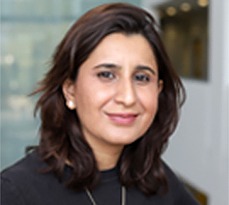by Dr Juvaria Jafri, Research Associate, and Di Kennedy, Centre Manager, at the Centre for Strategic Philanthropy
Blended finance is an approach to global development co-operation that recognises that private capital has a pivotal role to play in meeting the Sustainable Development Goals (SDGs) for 2030.
The goals are an urgent call to action to end poverty, protect the planet and ensure that everyone can live in peace and prosperity by 2030. To achieve these goals, significant investment is required, however, the OECD estimates that there is an enormous spending shortfall of approximately $2.5 trillion per year. Post-COVID the funding gap is widening due to finances being diverted to recovery spending.

Global partnerships, as explicated in Goal 17, can help meet the financial challenges of sustainable development if public, philanthropic and private actors can work together on transformative solutions. The World Economic Forum notes that the “good news is that there is enough money to go around”, but also that there are bottlenecks which prevent private investors targeting the sectors and countries in which they are needed.
Funds and transactions that use blended finance seek to use development finance and philanthropic funds strategically to mobilise private capital flows to emerging and frontier markets. This type of approach has been used regularly in past for public-private partnerships — including in high income countries — for large infrastructure projects. More recently, impact investing has gained traction as a way to direct private capital to initiatives that have wider public benefits, particularly in terms of environmental, social, and corporate governance, commonly known as ESG.
Blended finance can help projects attain ESG objectives in three ways: impact, leverage, and return. More specifically, it can
- contribute towards achieving the SDGs,
- catalyse participation from the private sector through the involvement of public and philanthropic capital, and
- yield a positive financial return, given that different investors in a blended finance structure could have different financial return expectations, ranging from concessional to market rates.
Philanthropic foundations in a blended finance structure can partner with development finance institutions and offer guarantees to reduce risk for private finance; they can also create strong incentives for the private sector to invest in strategic sectors and thus supplement grants and development finance; and they can also provide technical assistance to facilitate investment to plug finance gaps.
The example of, the WEOF or Women Entrepreneurs Opportunity Facility, set up by Goldman Sachs and the International Finance Corporation or IFC, is illustrative here. Goldman Sachs and IFC partnered to create a loan facility for women entrepreneurs, so that women around the world could access capital to grow their businesses. With $100 million from the IFC, and $43 million from Goldman Sachs Foundation, this project, according to the OECD, was responsible for mobilising $81 billion in private investment over four years. Thus, the transaction not only contributed towards achieving the SDGs — 1 (No Poverty), 5 (Gender Equality), 8 (Decent Work and Economic Growth) and 10 (Reduced Inequalities) and it also yielded a positive financial return, and catalysed private investment.
Clearly, blended finance offers an appealing set of tools, but it is important nevertheless to question the win-win narrative that often surrounds new and exciting approaches to development and philanthropy. For example, as pointed out by Convergence, while blended finance is highly aligned with goals such as Goal 8 (Decent Work and Economic Growth) and Goal 13 (Climate Action), it is less aligned with SDGs such as Goal 16 (Peace, Justice and Strong Institutions).
At the Centre for Strategic Philanthropy, we are exuberant about how greater alignment around what works and what doesn’t can drive system change in Global Growth Markets. Blended finance is one example of a practice that can further institutionalise the third sector in emerging markets. Indeed, our executive education programme is dedicated to exactly this mission with a view to driving greater collaboration across sectors and across borders, uniting like-minded social change makers in their quest to deliver sustainable social impact while also building sectoral resilience post COVID-19.


